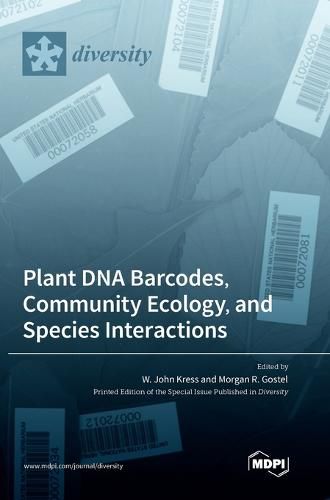Readings Newsletter
Become a Readings Member to make your shopping experience even easier.
Sign in or sign up for free!
You’re not far away from qualifying for FREE standard shipping within Australia
You’ve qualified for FREE standard shipping within Australia
The cart is loading…






This title is printed to order. This book may have been self-published. If so, we cannot guarantee the quality of the content. In the main most books will have gone through the editing process however some may not. We therefore suggest that you be aware of this before ordering this book. If in doubt check either the author or publisher’s details as we are unable to accept any returns unless they are faulty. Please contact us if you have any questions.
The community of biologists has been eager to realize the promise of DNA barcodes since the concept was first proposed in 2003. As we approach twenty years of DNA barcoding, their application continues to increase, and methods continue to be developed that utilize this ever-expanding resource for multiple fields of biology. The nearly ten million DNA barcodes available today provide a database that is especially useful for ecology and evolutionary biology. Thanks to these large and well-curated DNA barcode resources, fundamental biological questions can be more rigorously addressed regarding community evolution, assembly, herbivory, pollination, and species interactions across and among diverse habitats and organisms, including plants, animals, fungi, and microorganisms. This reprint illustrates the wide variety of applications of DNA barcodes, especially in plants, to tackle research topics in ecology, evolutionary biology, plant-animal interactions, taxonomy, conservation, and ethnobotany.
$9.00 standard shipping within Australia
FREE standard shipping within Australia for orders over $100.00
Express & International shipping calculated at checkout
This title is printed to order. This book may have been self-published. If so, we cannot guarantee the quality of the content. In the main most books will have gone through the editing process however some may not. We therefore suggest that you be aware of this before ordering this book. If in doubt check either the author or publisher’s details as we are unable to accept any returns unless they are faulty. Please contact us if you have any questions.
The community of biologists has been eager to realize the promise of DNA barcodes since the concept was first proposed in 2003. As we approach twenty years of DNA barcoding, their application continues to increase, and methods continue to be developed that utilize this ever-expanding resource for multiple fields of biology. The nearly ten million DNA barcodes available today provide a database that is especially useful for ecology and evolutionary biology. Thanks to these large and well-curated DNA barcode resources, fundamental biological questions can be more rigorously addressed regarding community evolution, assembly, herbivory, pollination, and species interactions across and among diverse habitats and organisms, including plants, animals, fungi, and microorganisms. This reprint illustrates the wide variety of applications of DNA barcodes, especially in plants, to tackle research topics in ecology, evolutionary biology, plant-animal interactions, taxonomy, conservation, and ethnobotany.